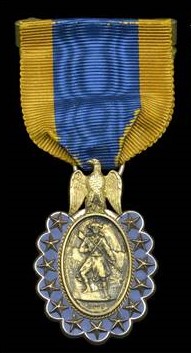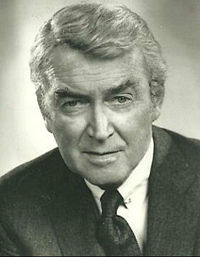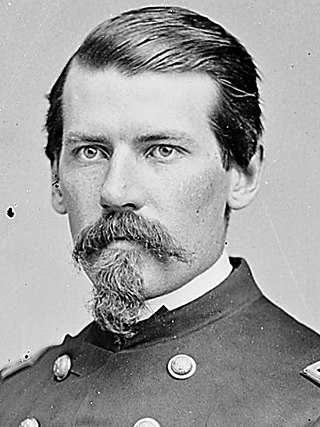
Horace C. Porter was an American soldier and diplomat who served as a lieutenant colonel, ordnance officer and staff officer in the Union Army during the American Civil War, personal secretary to General and President Ulysses S. Grant. He also was secretary to General William T. Sherman, vice president of the Pullman Palace Car Company and U.S. Ambassador to France from 1897 to 1905.
The Fuerzas Armadas de Liberación Nacional was a Puerto Rican clandestine paramilitary organization that, through direct action, advocated independence for Puerto Rico. It carried out more than 130 bomb attacks in the United States between 1974 and 1983, including a 1975 bombing of the Fraunces Tavern in New York City that killed four people.

Fraunces Tavern is a museum and restaurant in New York City, situated at 54 Pearl Street at the corner of Broad Street in the Financial District of Lower Manhattan. The location played a prominent role in history before, during, and after the American Revolution. At various points in its history, Fraunces Tavern served as a headquarters for George Washington, a venue for peace negotiations with the British, and housing federal offices in the Early Republic.
The Intelligence Directorate, commonly known as G2 and, until 1989, named Dirección General de Inteligencia (DGI), is the main state intelligence agency of the government of Cuba. The DI was founded in late 1961 by Cuba's Ministry of the Interior shortly after the Cuban Revolution. The DI is responsible for all foreign intelligence collection and comprises six divisions divided into two categories, which are the Operational Divisions and the Support Divisions.

The Battle of Williamsburg, also known as the Battle of Fort Magruder, took place on May 5, 1862, in York County, James City County, and Williamsburg, Virginia, as part of the Peninsula Campaign of the American Civil War. It was the first pitched battle of the Peninsula Campaign, in which nearly 41,000 Federals and 32,000 Confederates were engaged, fighting an inconclusive battle that ended with the Confederates continuing their withdrawal.

Edwin Vose Sumner was a career United States Army officer who became a Union Army general and the oldest field commander of any Army Corps on either side during the American Civil War. His nicknames "Bull" or "Bull Head" came both from his great booming voice and a legend that a musket ball once bounced off his head.

The Sons of the American Revolution (SAR), formally the National Society of the Sons of the American Revolution (NSSAR), is a federally chartered patriotic organization. The National Society, a nonprofit corporation headquartered in Louisville, Kentucky, was formed on April 30, 1889, in New York City. Its objectives are to maintain and extend "the institutions of American freedom, an appreciation for true patriotism, a respect for our national symbols, the value of American citizenship, [and] the unifying force of 'e pluribus unum' that has created, from the people of many nations, one nation and one people."
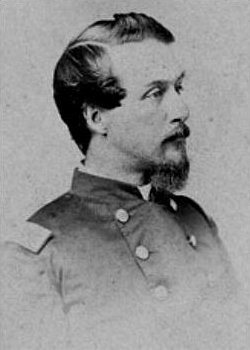
Frank Wheaton was a career military officer in the United States Army during the American Civil War and Indian Wars. He also was military commander over south Texas during the Garza Revolution.

Alexander Stewart Webb was a career United States Army officer and a Union general in the American Civil War who received the Medal of Honor for gallantry at the Battle of Gettysburg. After the war, he was a prominent member of New York Society and served as president of the City College of New York for thirty-three years.

Samuel Fraunces was an American restaurateur and the owner/operator of Fraunces Tavern in New York City. During the Revolutionary War, he provided for prisoners held during the seven-year British occupation of New York City (1776-1783), and claimed to have been a spy for the American side. At the end of the war, it was at Fraunces Tavern that General George Washington said farewell to his officers. Fraunces later served as steward of Washington's presidential household in New York City (1789–1790) and Philadelphia (1791–1794).
Thomas Hickey was a Continental Army soldier in the American Revolutionary War, and the first person to be executed by the Continental Army for "mutiny, sedition, and treachery".

Lloyd Carpenter Griscom was an American lawyer, diplomat, and newspaper publisher.
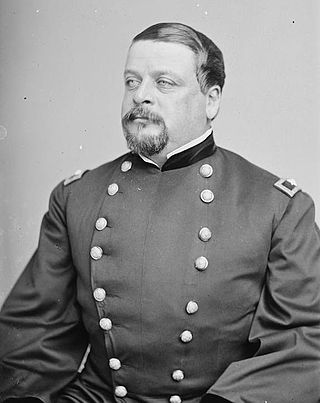
Alfred Gibbs was a career officer in the United States Army who served as an officer during the Mexican-American War and Apache Wars. He served as a brigadier general in the Union Army during the American Civil War.

Pittsburgh, Pennsylvania, was a thriving and important city during the American Civil War, and provided a significant source of personnel, war materiel, armament, ammunition, and supplies to the Union Army. Situated at the confluence of the Monongahela, Allegheny and Ohio rivers, Pittsburgh was an important transportation hub for both riverine and rail transport, as well as overland via its system of roads.

The '76 House, also known as the Old '76 House, is a Colonial-era structure built as a home and tavern in Tappan, New York, in 1754 by Casparus Mabie, a merchant and tavern-keeper.
1776 is celebrated in the United States as the official beginning of the nation, with the Declaration of Independence of the Thirteen Colonies from the British Empire issued on July 4.

John Austin Stevens Jr. was a leader of business, an adviser of government and a student of the American Revolution. While he was born to a prominent banking family with political connections, it was his interest in U.S. history and his founding of Sons of the Revolution for which he is best known.
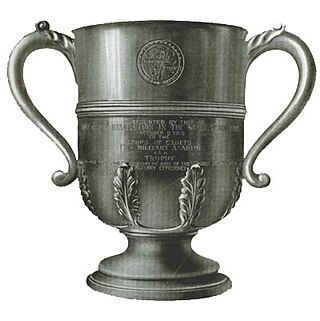
The Knox Trophy is the oldest military award of the United States Military Academy at West Point. The award was established on October 8, 1910, and is given annually by the Sons of the Revolution in the State of New York to the United States Military Academy cadet with the highest rating for military efficiency. Named in honor of General Henry Knox, the first Secretary of War, the original trophy, made by Tiffany & Company was originally kept on display in the office of the West Point Commandant.

Rafael Manio Ileto was a Filipino general who served as the 22nd Secretary of the Department of National Defense (DND) of the Philippines. He also became the Vice Chief of Staff of the Armed Forces of the Philippines (AFP). He also served as Philippine Ambassador to Turkey, Iran, Cambodia, Thailand, and Laos.
